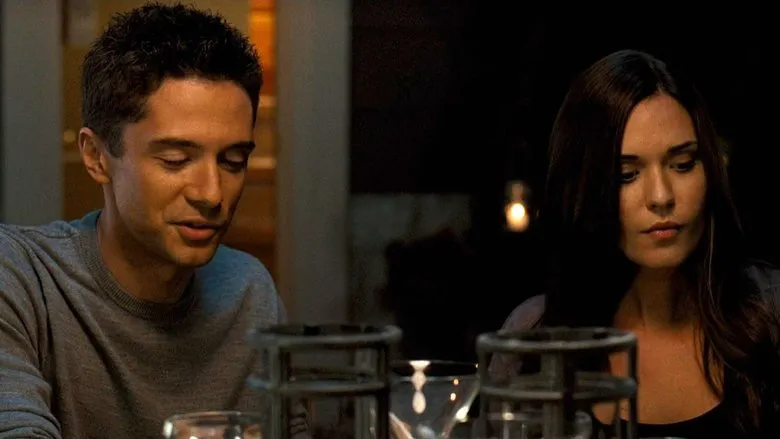The Double: A Dizzying Descent into Identity Loss
Prepare for a relentlessly grim and profoundly heavy cinematic journey as The Double pulls you into the agonizing world of a small man battling the existential threat posed by his own dark doppelganger. What begins as a suffocating tale of lost identity unravels into an extraordinary kaleidoscope of hauntingly vivid images, startling visual discoveries, and layers of philosophical interpretation that linger long after the credits roll.
Simon James, an unassuming office clerk, embodies the very definition of inconspicuousness. He exists in perpetual shadow, so forgettable that even the tenacious security guard at his building’s entrance, having seen him for seven years, struggles to recall his face. His silent affection for the captivating Hannah, who works on another floor, does little to rouse this young man from his deep-seated inertia. Yet, this static, almost non-existent existence is violently disrupted by the arrival of a new employee: James Simon. An unsettling identical mirror image of Simon, James is everything Simon is not – uninhibited, charismatic, driven, and effortlessly sociable. He instantly captivates everyone around him, and in doing so, parasitically siphons the very essence of life from Simon. Pushed to the brink, the hero finds himself stripped of everything, propelled towards a stark, terrifying choice: to descend into the abyss of complete oblivion or to muster the impossible strength to resist the world that is consuming him.
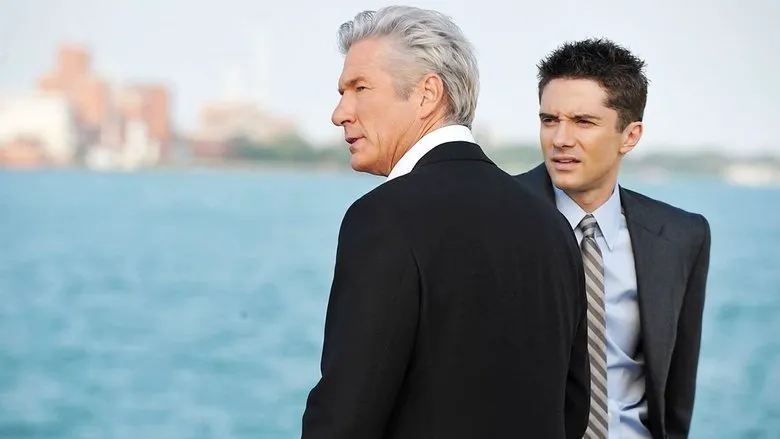
A Dostoevskian Nightmare with a Singular Twist
The opening disclaimer, “Based on the novel ‘The Double’ by F.M. Dostoevsky,” might initially intimidate some viewers, calling to mind dense, melancholic Russian literature. However, it’s crucial not to let this preface overshadow the film itself. The true source of fascination, and indeed apprehension, lies not in Dostoevsky’s classical gloom, but in the peculiar, darkly comedic, and often stiflingly weighty worldview of Richard Ayoade, the film’s director and screenwriter. It is Ayoade’s distinct vision that truly defines The Double. Despite its unsettling strangeness and pervasive morbidity, there is an undeniable, compelling enchantment to the film that ensures it will etch itself into your memory as one of the most uniquely captivating cinematic experiences of the year.
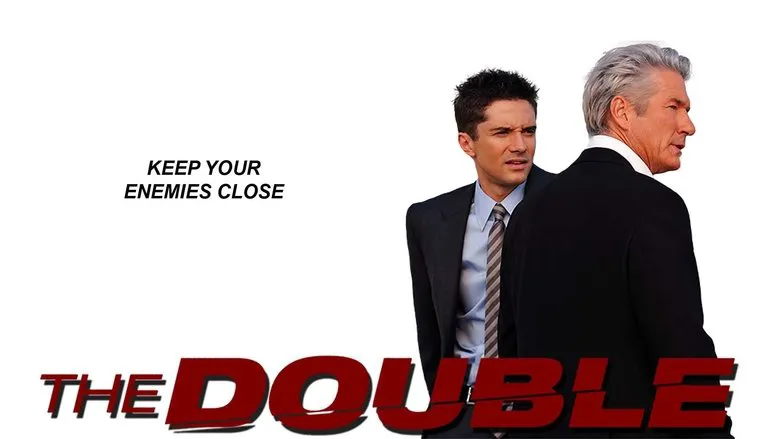
A Masterful Visual and Thematic Patchwork
Both visually and thematically, The Double is akin to an intricately woven patchwork quilt, rich with deliberate and perhaps even unconscious stylistic allusions. So numerous are these cinematic quotes that one could devote countless hours dissecting the precise influences that shaped Ayoade’s distinctive artistic voice. Viewers keen on thematic parallels will find strong points of connection with films like Fight Club and The Machinist, particularly concerning themes of psychological fracturing and self-annihilation. Visually, the film’s oppressive atmosphere and dystopian aesthetic will evoke immediate recognition from fans familiar with Alex Proyas’s Dark City and Terry Gilliam’s quintessential Brazil. The meticulous camera work and meticulously crafted, claustrophobic sets conjure associations with the whimsical yet often melancholic worlds of Michel Gondry, the sharply distinctive narratives of the Coen brothers, or even the consciously retro “kitsch” of recent Wes Anderson films.
Indeed, the external presentation of the picture, designed to directly impact the viewer’s senses, is arguably as crucial as its narrative depth. The immersion into Simon’s stifling world is far more than just conceptually unpleasant; it’s viscerally uncomfortable, persistently oppressive, and quite literally physically tangible – an astounding achievement for a director for whom The Double marks only his second full-length feature. Complementing this oppressive atmosphere, all street scenes in the film were meticulously shot at night on the desolate outskirts of London, further emphasizing the pervasive gloom. The office, the characters’ apartments, and even the bar settings were all carved out of a single, abandoned building – a crumbling relic where clerks just like Eisenberg’s character once toiled, lending an unparalleled authenticity to the film’s forgotten, decaying world.
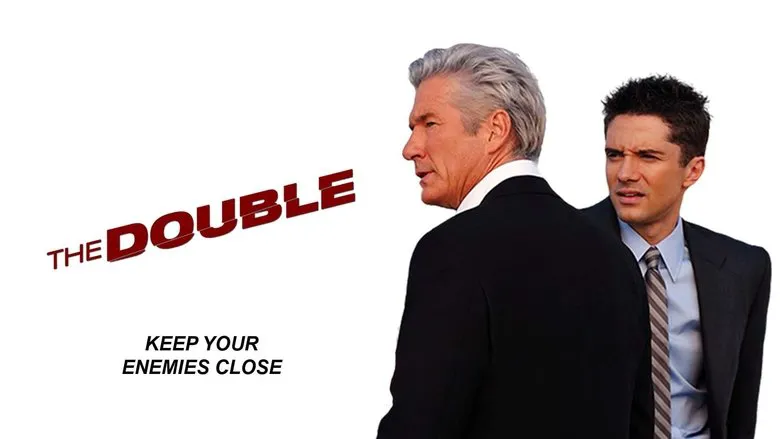
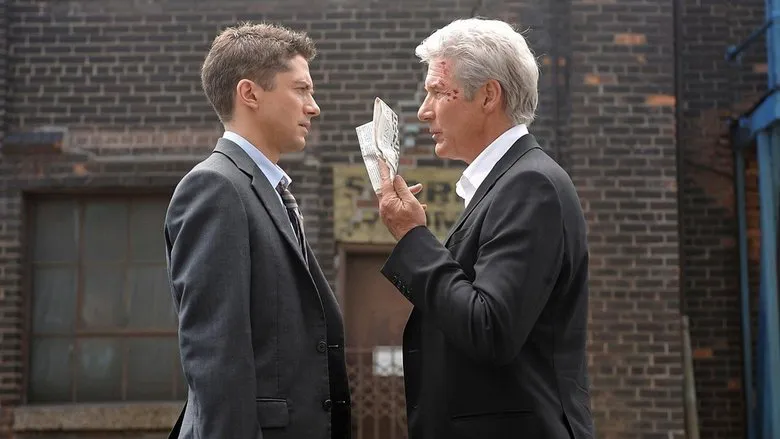
The Doppelganger Trope Reimagined with Frightening Precision
The core of the plot – Simon’s profound inner conflict stemming from his doppelganger – isn’t presented as an entirely novel story. The concept of a dark double, serving to prominently showcase the protagonist’s fears, neuroses, and communication anxieties, is a narrative device that has graced world art for centuries. Its presence can be traced back through countless iterations, from ancient legends of shapeshifting werewolves who walk among us by day and transform by night, to cinematic classics ranging from The Strange Case of Dr. Jekyll and Mr. Hyde to Darren Aronofsky’s haunting Black Swan. The Double, however, deviates from this tradition by not tormenting the audience with incredulous plot twists or a grand secret unveiled only in the very final moments.
Instead, the relationship between Simon and James directly mirrors the chilling connection between Tyler Durden and the Narrator in Chuck Palahniuk’s seminal Fight Club. The crucial distinction, however, lies in their ultimate objectives. Unlike Tyler, who, “having a lot of soap,” sought to explode society at large, Jesse Eisenberg’s character, James, shows a singularly malignant focus. He prefers to dismantle not “anything,” but specifically Simon, his human carrier. His chilling purpose is to systematically strip Simon of the vestiges of his sanity, his will to live, and his very capacity to resist. The already anemic and withdrawn Simon, lacking any substantial lust for life, easily succumbs to the insidious pressure exerted by his new “friend,” meekly wandering towards his inevitable destruction.
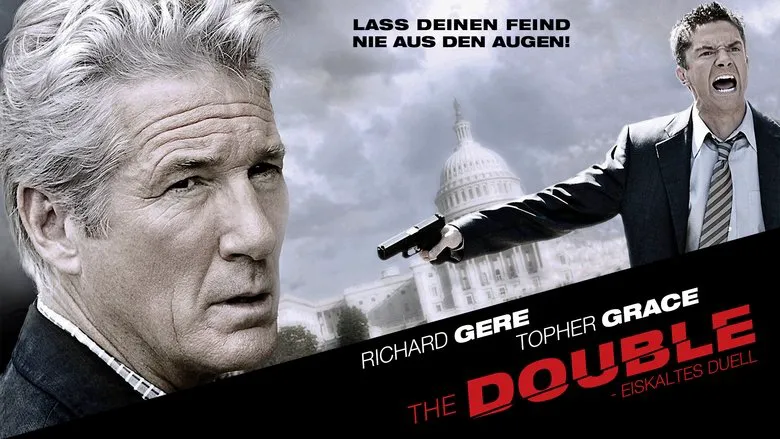
Eisenberg’s Tour-de-Force Dual Performance
It is imperative now to shift focus to the truly outstanding work of Jesse Eisenberg in this film. In a few years, when fans recall his name, it will be a fascinating question as to which role will spring to mind first: the charmingly slick swindler from Now You See Me or the sociopathic, brilliant computer scientist from The Social Network. However, without a doubt, a significant portion of viewers will forever associate him with the pathetic, almost tragically comical image of Simon. This thin clerk, swallowed by an ill-fitting, unsightly suit that hangs a little too loosely, embodies all the crippling insecurities of those unable to initiate a conversation, to stand up to an aggressor, or to confess deep-seated feelings to a loved one.
This is a truly commendable, near-perfect performance from Eisenberg, made even more challenging by the fact that he consistently has to act opposite equally convincing, yet fundamentally distinct personalities – often sharing the very same frame. While Mia Wasikowska, unfortunately, appears a little more subdued, perhaps feeling mired in similarly typecast roles of hysterical or not-so-quick-witted young women, where her performances tend to blend, Ayoade’s ensemble of supporting actors shines brightly. The characteristic and incisive dialogues he has crafted for each role, no matter how brief or episodic, imbue even the most minute characters with surprising weight and volume.
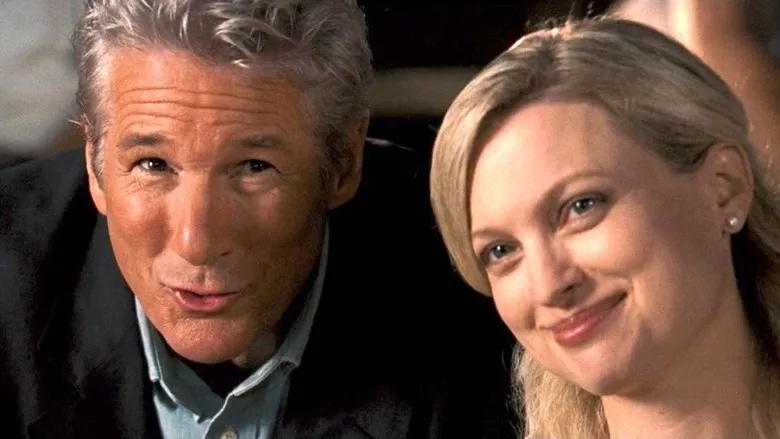
A Promising Director with a Few Stumbles
The only significant critique that might reasonably be directed at Ayoade arises from the slightly underdeveloped finale. It suggests that the director himself might have become somewhat entangled in the intricate web of dreams, illusions, and grotesque reality that he so masterfully wove throughout the film. One could argue he appears to have allowed some of the initial narrative ardor to dissipate into banalities and a somewhat misplaced romantic subplot. However, we should be forgiving. British cinema, through the lens of the director of the acclaimed “Community” series (as in Garth Marenghi’s Darkplace and The Mighty Boosh) and the beloved actor from “The IT Crowd,” has undeniably gained a new, bold, and strikingly original creator. Richard Ayoade has not only demonstrated the courage to reinterpret Dostoevsky himself but has also delivered a work that promises an intriguing and unpredictable future for his cinematic endeavors.
